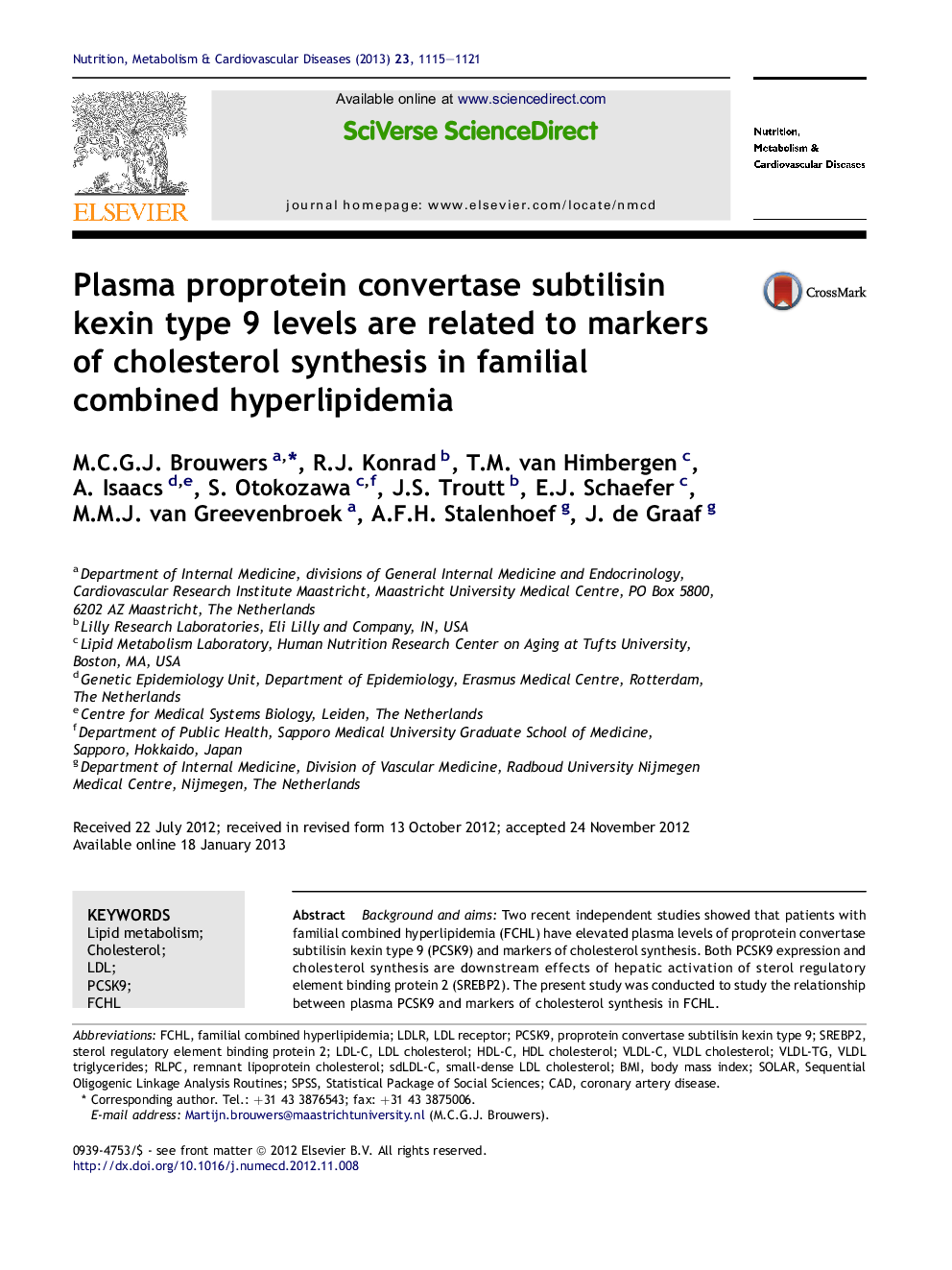| کد مقاله | کد نشریه | سال انتشار | مقاله انگلیسی | نسخه تمام متن |
|---|---|---|---|---|
| 5996780 | 1180710 | 2013 | 7 صفحه PDF | دانلود رایگان |
Background and aimsTwo recent independent studies showed that patients with familial combined hyperlipidemia (FCHL) have elevated plasma levels of proprotein convertase subtilisin kexin type 9 (PCSK9) and markers of cholesterol synthesis. Both PCSK9 expression and cholesterol synthesis are downstream effects of hepatic activation of sterol regulatory element binding protein 2 (SREBP2). The present study was conducted to study the relationship between plasma PCSK9 and markers of cholesterol synthesis in FCHL.Methods and resultsMarkers of cholesterol synthesis (squalene, desmosterol, lathosterol), cholesterol absorption (campesterol, sitosterol, cholestanol) and PCSK9 were measured in plasma of FCHL patients (n = 103) and their normolipidemic relatives (NLR; n = 240). Plasma PCSK9, lathosterol and desmosterol levels were higher in FCHL patients than their NLR (p < 0.001, age and sex adjusted). Heritability calculations demonstrated that 35% of the variance in PCSK9 levels could be explained by additive genetic effects (p < 0.001). Significant age- and sex-adjusted correlations were observed for the relationship between PCSK9 and lathosterol, both unadjusted and adjusted for cholesterol, in the overall FCHL population (both p < 0.001). Multivariate regression analyses, with PCSK9 as the dependent variable, showed that the regression coefficient for FCHL status decreased by 25% (from 0.8 to 0.6) when lathosterol was included. Nevertheless, FCHL status remained an independent contributor to plasma PCSK9 (p < 0.001).ConclusionsThe present study confirms the previously reported high and heritable PCSK9 levels in FCHL patients. Furthermore, we now show that high PCSK9 levels are, in part, explained by plasma lathosterol, suggesting that SREBP2 activation partly accounts for elevated PCSK9 levels in FCHL.
Journal: Nutrition, Metabolism and Cardiovascular Diseases - Volume 23, Issue 11, November 2013, Pages 1115-1121
